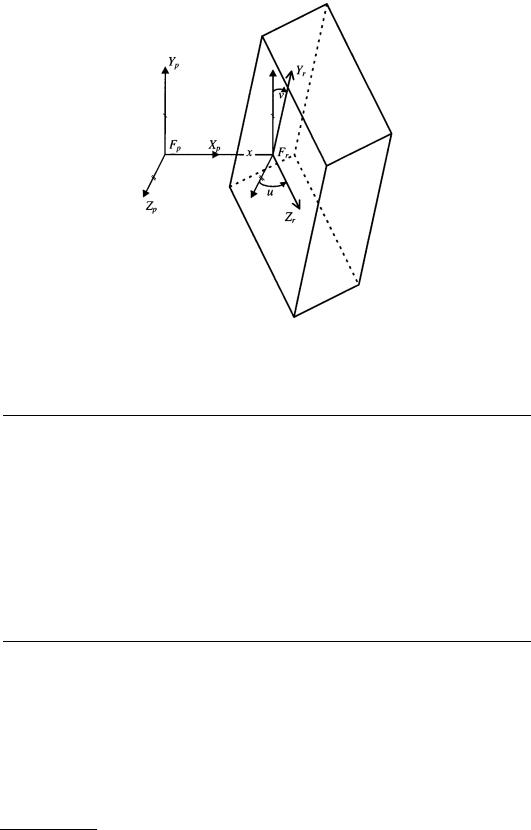
R. E. Saad, et. al.. "Proximity Sensing for Robotics."
Copyright 2000 CRC Press LLC. <http://www.engnetbase.com>.

R. E. Saad
University of Toronto
A. Bonen
University of Toronto
Proximity Sensing
for Robotics
K. C. Smith |
8.1 |
Proximity Definition |
|
University of Toronto |
8.2 |
Typical Sensor Characteristics |
|
8.3 |
Technologies for Proximity Sensing |
||
B. Benhabib |
|||
|
Electro-Optical Sensors • Capacitive Sensors • Ultrasonic |
||
University of Toronto |
|
Sensors • Magnetic Sensors |
The objective of this chapter is to review the state-of-the-art in proximity-sensing technologies for robotics. Special attention is paid to the sensing needs of robotic manipulators for grasping applications, in contrast to the needs of mobile robots for navigation purposes. For a review of the application of proximity sensing to mobile robots, the reader is referred to [1].
Robotic sensors can be categorized into three groups: medium-range (object recognition and gross position/orientation estimation) sensors, short-range (proximity) sensors, and contact sensors. Recent literature [2–6] suggests that robotic end effectors should be equipped with both short-range proximity and contact sensors.
Proximity sensors should be able to measure the position and orientation (pose) of an object’s surface. The range must be sufficiently large to compensate for uncertainties in the medium-range pose-estima- tion process, while maintaining sufficient accuracy to permit effective grasping of the object.
Transducers used by current proximity sensors vary in sophistication. Despite their great variety, however, these transducers and their accompanying electronic interface circuits (together comprising the proximity sensor) cannot presently meet the stringent robustness requirements of most industrial robotic applications. Novel sensing algorithms and techniques still must be developed in order to improve on their current characteristics, and, furthermore, to control both the sensing and grasping processes.
8.1 Proximity Definition
The term “proximity,” quantified by “pose” in this chapter, refers to three geometrical parameters x, u, and v as shown in Figure 8.1, where:
x = the translation from the origin of the sensor’s reference coordinate frame, Fp, to a target point on the surface of the object measured along Xp. This target point defines the origin of the surfaceframe, Fr
u = the vertical orientation of the object’s surface, defined as a rotation around Yp (of the translated frame), thereby specifying the new Zr
v = the horizontal orientation of the object’s surface, defined as a rotation around Zr, thereby specifying
Yr .
© 1999 by CRC Press LLC

FIGURE 8.1 Proximity parameters.
8.2 Typical Sensor Characteristics
Conventionally, proximity sensors should be capable of measuring distances of up to 50 mm, and two degree-of-freedom orientations equivalent to an overall inclination of up to ±30°. The intended principal application of the sensor is to act as a guide for the robot. Thus, it would be desirable to have higher sensitivity and accuracy as the gripper approaches the object, namely when both the relative orientation and the distance approach near-zero values.
The signals received by the electronic interface circuit should be processed without limiting the required operating range of the sensor. The interface circuit should also minimize the effect of interference from the surroundings. It should therefore employ solutions to reduce background-noise interference and dynamic-range limitations.
The operation of the robot should not be slowed down by the sensor. Namely, a pose of the object should normally be estimated in 1 ms to 10 ms.
8.3 Technologies for Proximity Sensing
Proximity sensors have employed various transduction media, including sound waves, magnetic fields, electric fields, and light. Presently, electro-optical techniques seem to be the most appropriate for roboticgrasping applications. Such sensors are relatively small in size, have a large range of operation, and impose almost no restrictions on the object’s material. However, recently, some new ultrasonic and capacitive proximity sensors have been fabricated directly as ICs, also showing the possibility of very-small-size proximity sensors based on these technologies [7, 8].
Brief descriptions of the principles of the primary technologies used by proximity sensors are given below, with the main emphasis being on optical transducers. A survey of commercial proximity sensors capable of measuring distances can be found in [6].
© 1999 by CRC Press LLC
